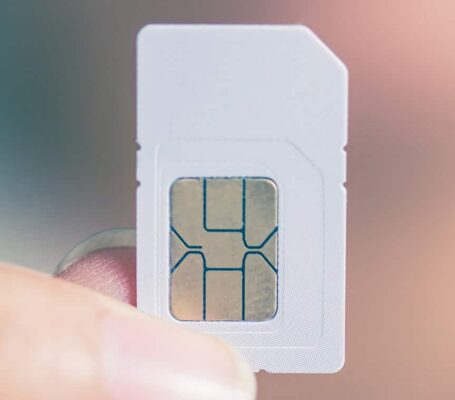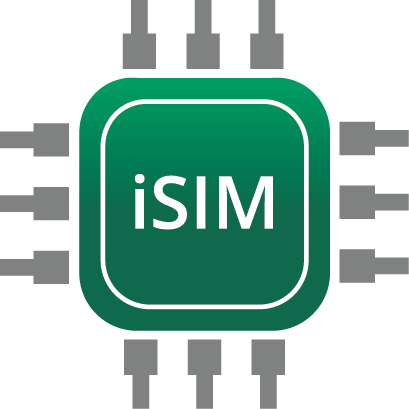The Differences between SIM, eSIM and iSIM
By Amelie Huart
July 25, 2023
The physical SIM card has been part of cellular connectivity for decades. It plays a leading role in many consumer mobile devices and IoT deployments. However, the SIM market is evolving rapidly, and newer options eliminate the need for a removable SIM.
The embedded SIM (eSIM) is soldered to a device’s printed circuit board (PCB). It provides a way to send SIM profiles to devices over the air using remote SIM provisioning.
The newest iteration in the SIM market is the integrated SIM (iSIM). It streamlines the eSIM’s functionality by porting it into a system-on-a-chip (SOC) architecture. This capability means the SIM does not require dedicated hardware.
According to a Counterpoint Technology Market Research report, by 2030, around 70% of cellular devices will be equipped with an eSIM. Furthermore, iSIM is expected to dominate as the preferred SIM form factor across all cellular categories.
While fresh interpretations of SIM technology are exciting, the newest incarnation is not the best option for every deployment. It’s best to consider specific use cases for SIM, eSIM and iSIM and match them with the SIM option that fits their needs.

The traditional SIM is a removable card that comes in various sizes. It was first developed for the consumer mobile phone market and inherited by the M2M industry.
Traditional SIMs evolved into new form factors to fit smaller devices. They are straightforward and convenient for consumer applications and some IoT use cases. However, they can present reliability and security risks for large-scale device deployments.
When SIMs are easy to access, they’re also subject to stealing or tampering. IoT managers must continuously monitor SIM cards in their devices to ensure they aren’t removed and placed in other devices.
When an organization switches mobile carriers and needs to change device profiles, traditional SIMs are convenient in some use cases — remove the old SIM and plug in the new one. However, removing and replacing SIM cards on thousands of devices in large-scale IoT deployments can be costly or impossible.

The eSIM was developed in response to the shortcomings of traditional SIM cards for some use cases. In particular, the connected car industry pushed eSIM forward. Automotive OEMs were motivated to create a tamper-proof SIM with more robust security. Such a SIM would serve their connectivity needs and protect against extreme environmental conditions, such as:
Today, the automotive industry has adopted the technology widely, and most connected cars use a soldered eSIM.
The embedded Universal Integrated Circuit Card (eUICC) standard makes the eSIM versatile. It allows remote provisioning of the hardware with network profiles. The standard allows mobile network operators (MNOs) to send their SIM profiles to eSIM devices remotely. By eliminating the need for physical access, eUICC enhances connectivity management for IoT deployments at scale.
The eUICC standard also enables multiple profiles to be loaded. Devices can be manufactured for use in multiple geographies. Then they can be switched to the appropriate regional connectivity provider profile when the device is deployed or moved.

OEMs must create cost-optimized devices that are efficient in terms of data and energy consumption and BOM costs. They can achieve this by leveraging low-tier IoT connectivity options such as NB-IoT and LTE-M. iSIM technology incorporates the SIM operating system into the cellular module hardware. It enables industries to provide coverage with data and energy efficiency.
The iSIM also saves space in hardware design. Every square millimeter makes a difference to size-constrained applications. Since it does not require physical space for an eSIM chip or removable SIM card, the iSIM can reduce the device footprint.
With iSIM functionality built into the base cellular module hardware, the result is savings from eliminating components, including:
iSIM is now standardized. The GSMA launched an integrated eUICC (ieUICC) technology initiative in 2015, resulting in a proof of concept (PoC) demonstrated in 2017. Since then, the integrated eUICC has been considered in the existing RSP specifications for devices, including:
There are two primary forms of security accreditation for SIMs. The first is the EAL standard, created by Common Criteria as a level of security adopted by the MNO community. If a chip manufacturer attains EAL4+ certification, the hardware is processed to ensure it is not vulnerable. Carriers ensure that their SIM vendors comply with this standard, which includes the chip’s physical security and applies to traditional SIM cards and eSIMs.
The GSMA also provides a Security Accreditation Scheme (SAS) for SIMs and eSIMs with two different specifications:

This specification guarantees that the SIM’s manufacturing site meets physical security standards. In addition, it ensures that strict security procedures associated with personalizing and chipping SIMs are followed.
The SAS-SM specification provides security auditing and accreditation for providers who want to offer remote provisioning services to MNOs and OEMs.
The SAS-UP requirements have been adapted for iSIM production since it involves the SoC manufacturer and the SIM operating system (OS) supplier. The GSMA has defined a two-step personalization process:
Currently, only one SoC maker and one SIM OS supplier are two-step personalization certified.
Even though the standards are now defined, the iSIM (ieUICC) massive adoption will take time. The SoC makers must prove the hardware’s robustness. The vendors must adapt their tools and processes to comply with the GSMA two-step personalization.
iSIM will need to prove its functional compliance with remote SIM provisioning. However, new eSIM IoT technology (SGP.31/32) is not yet covered by test specifications and an updated compliance process. Those definitions should be ready by the beginning of 2024, impacting the availability date of iSIMs certified against this new standard.
When selecting a SIM type and form factor for your IoT deployment, start by considering cost structure because it reflects the business model behind the device. For example, in the automotive sector, the cost of the final product might motivate you to invest in expensive chips. Embracing a less expensive platform would mean compromising on resiliency and security.
If your product is a low-tier device such as a pet tracker, spending an extra dollar or two on hardware per device could eliminate your profit margin. In that case, seeking a low-cost iSIM solution makes sense.
Also, consider whether the use case will require remote provisioning. While eSIMs are best known for this feature, all form factors are candidates for eUICC software that enables OTA profile updates. GSMA has designed a large-scale provisioning scheme for the IoT space, allowing MNOs to provision devices in large volumes simultaneously.

While remote provisioning offers tremendous value for many applications, its inherent shortcomings are worth noting. Remote SIM provisioning service also comes with relatively high costs, which doesn’t fit well with the industrial IoT economy in low-tier IoT devices. If devices are deployed in places without proper coverage, network issues could prevent profile updates from going through.
You can attempt a manual update if a person is holding the device. However, if it’s in a remote area, sending someone to fix it is costly, especially if many other devices in the deployment have the same issue.
Despite the huge growth of eSIM and iSIM, traditional SIM cards continue to exist in the IoT market — at least for now. In many countries, prepaid service remains the predominant way to connect, making traditional SIM cards the most practical choice.
For high-end IoT use cases with an inherently higher cost structure that require a high degree of MNO acceptance from the first day, eSIMs are an ideal solution. iSIMs will come into play for low-tier IoT connections where device size and energy efficiency are necessary strengths.
There’s a lot to consider when choosing between SIM, eSIM and iSIM. Depending on the use case, there’s room for every form factor and SIM type for the foreseeable future.
Speak with our IoT connectivity experts today and request an IoT connectivity starter kit.
Editor’s Note: This blog was originally published on 6 May 2020 and has since been updated.